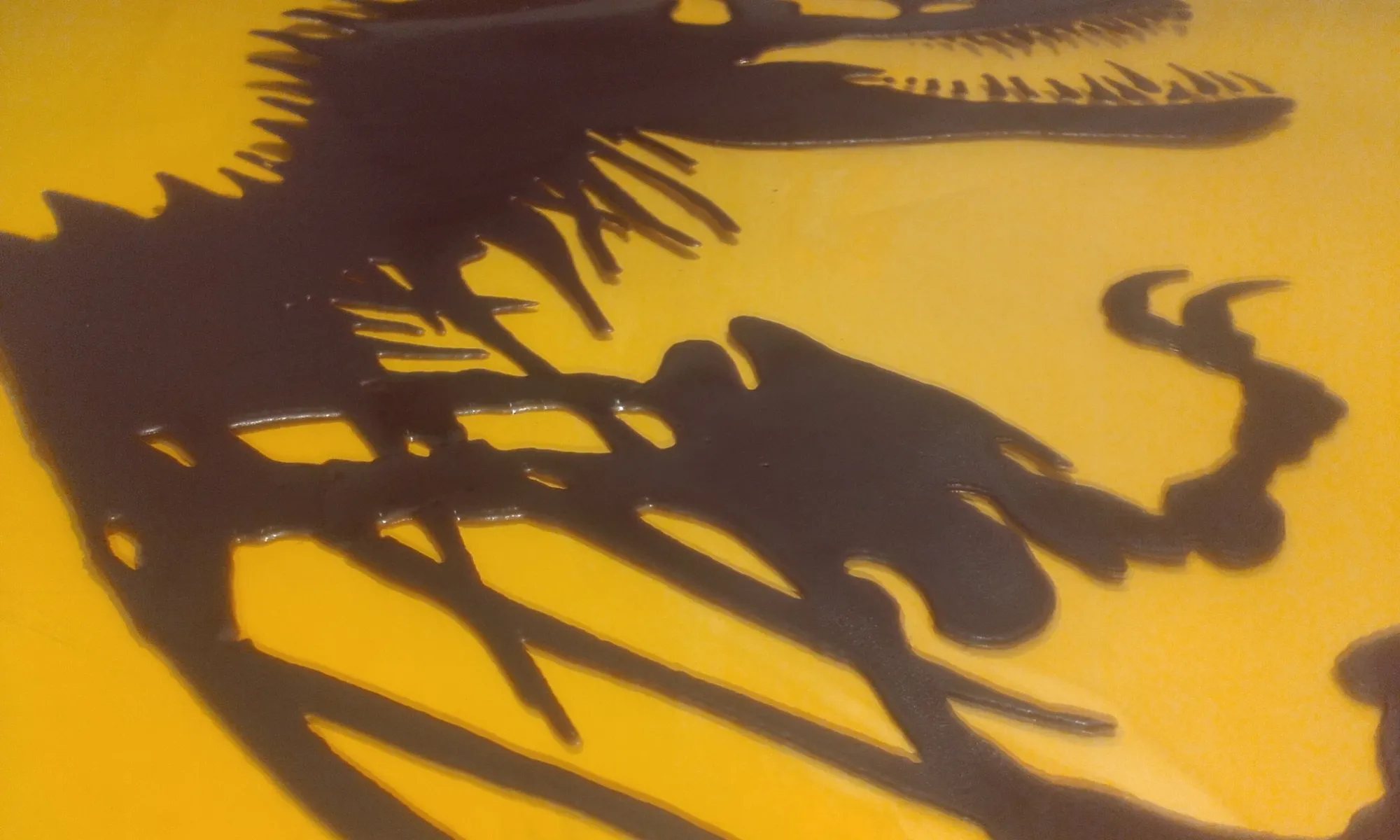Rico's New Achievement!! Chocolate Silkscreen Printing

Retaking a thread since 2008 on silk screen printing with cocoa butter, started by @ christina-durta. 10 years later I achieved an advance on the subject.
After having some years in pastry. and then in textile screen printing I was able to get the experience to produce apparently safe edible silkscreen.
If someone is interested in retaking the thread, I can tell you specifically what information I obtained since then. Surely someone can help to understand global regulations for this issue.
Soon more photos and videos!
Hi
Just this weekend I will prepare a some “alfajores” coated with chocolate with the tranfers. So this weekend I’ll have those pictures!
On Monday I have an interview with a bromatology specialist who will recommend me what analysis I have to do to be completely sure that it is safe to eat these things made with these tranfers.
I have to take the photosensitive emulsion with its respective security sheet, the screens revealed with the designs, the tranfers and the food already with the tranfers made.
This still will not give me the authorization to market the tranfers or the food but it is the previous step to be sure that elements of the emulsion do not migrate to the chocolate.
Do you have any photos of examples of finished transfer sheets and chocolate with the transfers on them?
Yes. You are right about that. I suppose you could address that by having two stencils which are the same except for having the bridges in different locations or one could just fill in the bridges of the first one.
Also I realized I was wrong about how the steel stencils are made – they are laser cut. So no photochemicals.
A stencil is the cut out figure. Then if you want to make letters like for example the O. We would have to adapt the designs leaving some bridges that keep the parts together!
The screen printing allows to achieve that those parts that in the stencil would be lost, are stuck in the silk.
For example this design would be impossible in stencil. When you cut the outline
you lose all the inner figures.

These stencils are produced using photoresist etc. The resolution of the stencil I mentioned is around 0.001″ (0.03mm) so I doubt if the ability of the stencil to render detail will be a concern. Also there are fixtures for these stencils designed to position them to a similar resolution.
The advantage for your application is that you get a piece of stainless steel and don’t need to be concerned about the chemicals used to produce it (I think). It should be just like using a pot or pan.
Hi
You can use any type of stencil. Even baking paper cut and positioned in contact with silkscreen silk. but you will never achieve the level of detail that can be achieved with photosensitive development.
Maybe this doesn’t help you, but an alternative might to to order stainless steel stencils used for making printed circuit boards. An example of a place that makes these is: https://www.oshstencils.com/#%20. You upload artwork and they send you the stencil.
great
Translated with google. sorry for the mistakes.!
Do you know the problem of the emulsion of making the stencil that allows you to stamp with chocolate?
All this time we were looking for the “holy grail” of safe photosensitive emulsions for chocolate. The comercial food grade emulsion , dont exsist.
The issue is that in the legislation we will not find the word emulsion photosensitive. But if we know the ingredients of the emulsion we can trace them on the positive list of approved resins to get in contact with fatty foods.
Basically Polyvinyl Acetate + Sensitiver + Color + Water.
Polyvinine acetate is the basic ingredient of white glue and chewing gum.
I would feel safer using the latest generation of photosensitive emulsions. Called. Emulsions of pure photopolymer. They have less odor, no toxicity, low exposure time, long run time.
These emulsions do not have DIAZO, which has an intense yellow color that can stain the screens.
After the development of the screens, you should proceed to a post exposition to the sunlight and then it must be carefully degreased and washed with cold water!
Finally, in the legal question, it will depend on each country. If you want to sell chocolate-made tranfers you will have to make approvals that will include proof of transfer of ingredients from the chocolate emulsion. And if there is migration this should not exceed certain limits (12mg x kg)
Tomorrow I will prepare some screens, I can document with photos !!
regards
rico
I am interested in reopening this thread here and would love to see photos and videos. of what you’ve learned.
